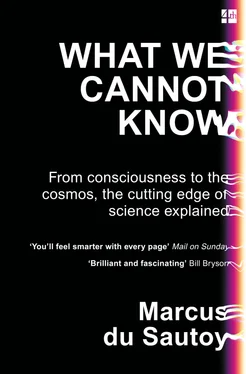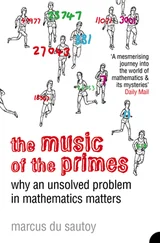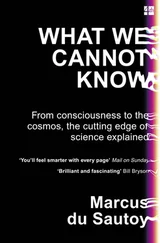While working as a meteorologist at MIT in 1963, Lorenz had been running equations for the change of temperature in a dynamic fluid on his computer when he decided he needed to rerun one of his models for longer. So he took some of the data that had been output earlier in the run and re-entered it, expecting to be able to restart the model from that point.
When he returned from coffee, he discovered to his dismay that the computer hadn’t reproduced the previous data but had generated very quickly a wildly divergent prediction for the change in temperature. At first he couldn’t understand what was happening. If you input the same numbers into an equation, you don’t expect to get a different answer at the other end. It took him a while to realize what was going on: he hadn’t input the same numbers. The computer printout of the data he’d used had only printed the numbers to three decimal places, while it had been calculating using the numbers to six decimal places.
Even though the numbers were actually different, they differed only in the fourth decimal place. You wouldn’t expect it to make that big a difference, but Lorenz was struck by the impact such a small difference in the numbers had on the resulting data. Here are two graphs created using the same equation but where the data that is put into the equations differ very slightly. One graph uses the input data 0.506127. The second graph approximates this to 0.506. Although the graphs start out following similar paths, they very quickly behave completely differently.

The model that Lorenz was running was a simplification of models for the weather that analysed how the flow of air behaves when subjected to differences in temperature. His rediscovery of how small changes in the way you start a system can have such a big impact on the outcome would have huge implications for our attempts to use mathematical equations to make predictions into the future. As Lorenz wrote:
Two states that were imperceptibly different could evolve to two considerably different states. Any error in the observation of the present state – and in a real system, this appears to be inevitable – may render an acceptable prediction of the state in the distant future impossible.
THE REVENGE OF THE GRASSHOPPER
When Lorenz explained his findings to a colleague, he received the reply: ‘Edward, if your theory is correct, one flap of a seagull’s wings could alter the course of history forever.’
The seagull would eventually be replaced by the now famous butterfly when Lorenz presented his findings in 1972 at the American Association for the Advancement of Science in a paper entitled: ‘Does the Flap of a Butterfly’s Wings in Brazil Set Off a Tornado in Texas?’
Curiously, both the seagull and the butterfly might have been pre-empted by the grasshopper. It seems that already in 1898 Professor W. S. Franklin had realized the devastating effect that the insect community could have on the weather. Writing in a book review, he believed:
An infinitesimal cause may produce a finite effect. Long-range detailed weather prediction is therefore impossible, and the only detailed prediction which is possible is the inference of the ultimate trend and character of a storm from observations of its early stages; and the accuracy of this prediction is subject to the condition that the flight of a grasshopper in Montana may turn a storm aside from Philadelphia to New York!
This is an extraordinary position to be in. The equations that science has discovered give me a completely deterministic description of the evolution of many dynamical systems like the weather. And yet in many cases I am denied access to the predictions that they might make because any measurement of the location or wind speed of a particle is inevitably going to be an approximation to the true conditions.
This is why the MET office, when it is making weather predictions, takes the data recorded by the weather stations dotted across the country and then, instead of running the equations on this data, the meteorologists do several thousand runs, varying the data over a range of values. The predictions stay close for a while, but by about five days into the future the results have often diverged so wildly that one set of data predicts a heat wave to hit the UK while a few changes in the decimal places of the data result in rain drenching the country.

Starting from nearly the same conditions, forecast A predicts strong wind and rain over the British Isles in 4 days’ time, while forecast B predicts incoming high pressure from the Atlantic.
The great Scottish scientist James Clerk Maxwell articulated the important difference between a system being deterministic yet unknowable in his book Matter and Motion , published in 1877: ‘There is a maxim which is often quoted, that “The same causes will always produce the same effects.”’ This is certainly true of a mathematical equation describing a dynamical system. Feed the same numbers into the equation and you won’t get any surprises. But Maxwell continues: ‘There is another maxim which must not be confounded with this, which asserts that “Like causes produce like effects.” This is only true when small variations in the initial circumstances produce only small variations in the final state of the system.’ It is this maxim that the discovery of chaos theory in the twentieth century revealed as false.
This sensitivity to small changes in initial conditions has the potential to sabotage my attempts to use the equations I’ve written down to predict the outcome of my dice. I’ve got the equations, but can I really be sure that I’ve accurately recorded the angle at which the cube leaves my hand, the speed at which it is spinning, the distance to the table?
Of course, everything isn’t completely hopeless. There are times when small changes don’t alter the course of the equations dramatically, like the paths in the classical billiard table. What is important is to know when you cannot know. A beautiful example of knowing the point when you can’t know what is going to happen next was discovered by mathematician Robert May when he analysed the equations for population growth.
KNOWING WHEN YOU CAN’T KNOW
Born in Australia in 1938, May had originally trained as a physicist working on superconductivity. But his academic work took a dramatic turn when he was exposed in the late 1960s to the newly formed movement in social responsibility in science. His attention shifted from the behaviour of collections of electrons to the more pressing questions of the behaviour of population dynamics in animals. Biology at the time was not a natural environment for the mathematically minded, but following May’s work that would all change. It was this fusion of the hardcore mathematical training he’d received as a physicist combined with a new sensibility to biological issues that led to his great breakthrough.
In a paper in Nature called ‘Simple Mathematical Models with Very Complicated Dynamics’, published in 1976, May explored the dynamics of a mathematical equation describing population growth from one season to the next. He revealed how even a quite innocent equation can produce extraordinarily complex behaviour in the numbers. His equation for population dynamics wasn’t some complicated differential equation but a simple discrete feedback equation that anyone with a calculator can explore.
Читать дальше














